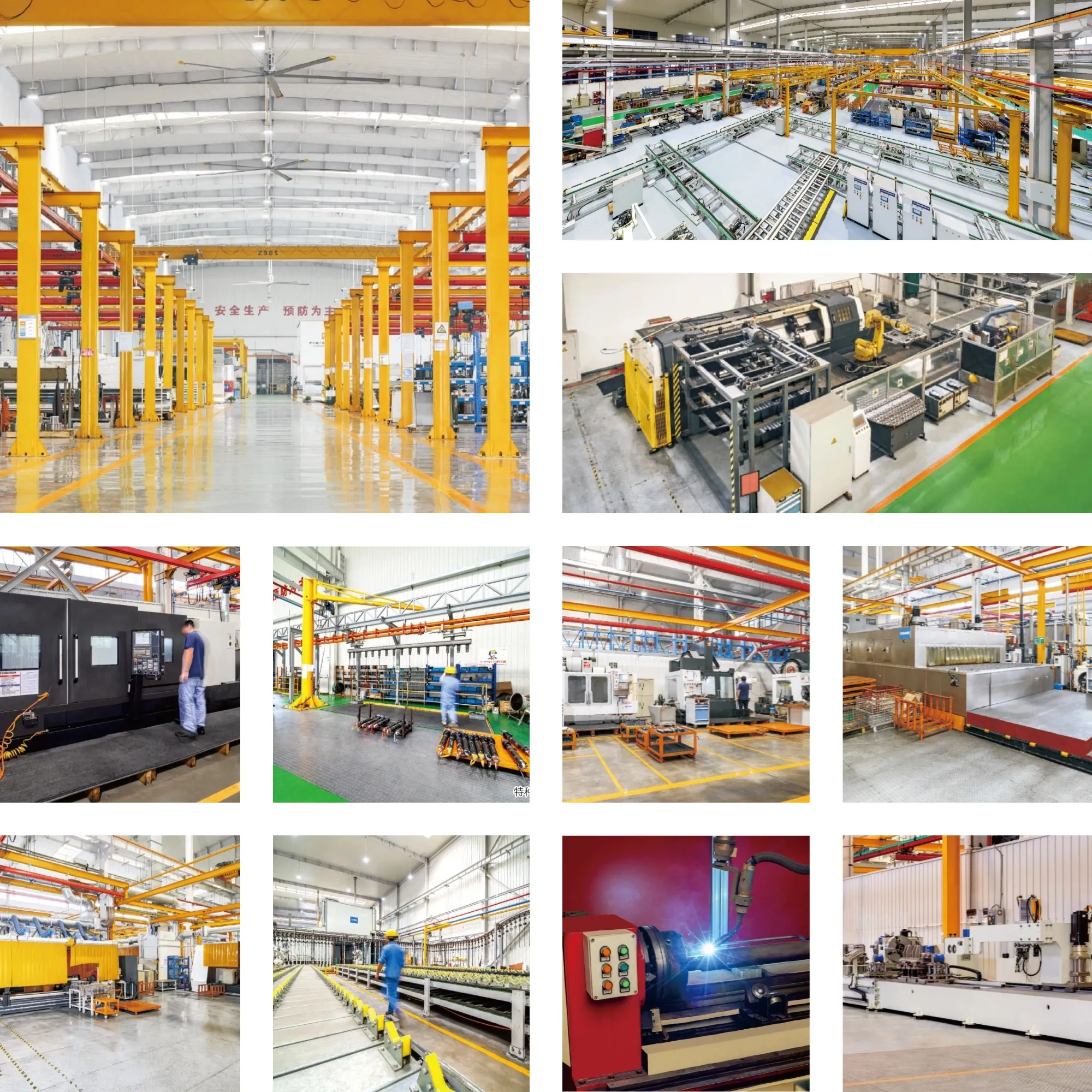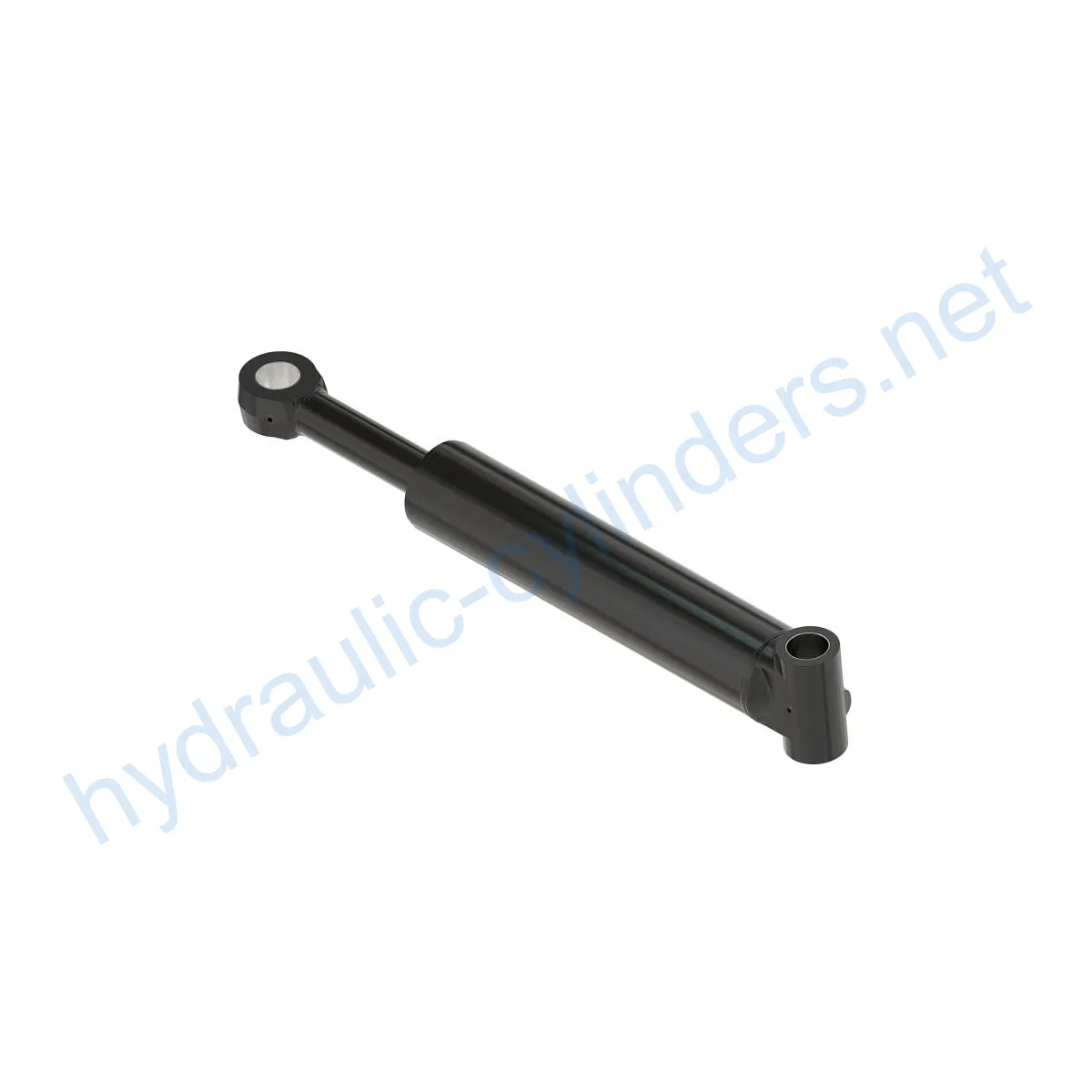Replacement Of F716204 Hydraulic Cylinder
As one of the hydraulic cylinders manufacturers, suppliers, and exporters of mechanical products, We offer hydraulic cylinders and many other products.
Please get in touch with us for details.
Mail:sales@hydraulic-cylinders.net
Manufacturer supplier exporter of hydraulic cylinders.
Replacement Of F716204 Hydraulic Cylinder
The Replacement Of F716204 Hydraulic Cylinder is a crucial component in various hydraulic systems. It is designed to provide reliable power and movement in applications such as excavators, cranes, tractors, harvesters, automated production lines, and more. This hydraulic cylinder is specifically designed for the 1910E and 1910G models.
Product Specifications
- Weight: 217.887 lb
- Height: 7.2 in
- Width: 8.2 in
- Length: 43.8 in
Features of the Replacement Of F716204 Hydraulic Cylinder
- Improved Equipment Performance: Replacing damaged or worn-out hydraulic cylinders can restore the normal operational capabilities of equipment, ensuring optimal performance in various applications.
- Enhanced Safety: Regularly replacing hydraulic cylinders can minimize safety hazards caused by cylinder failures, ensuring the safety of operators and equipment.
- Overload Protection: New cylinder designs often incorporate better overload protection mechanisms, improving overall safety.
- Quick Installation: Modern hydraulic cylinders are designed for ease of installation and replacement, minimizing downtime.
- Standardized Components: Many hydraulic cylinders are standardized products, making it easier to obtain replacement parts in the market.
Our company specializes in manufacturing high-quality replacement hydraulic cylinders. Our products are perfect substitutes for the hydraulic cylinders mentioned above. They are meticulously engineered to meet the performance and durability requirements of various applications.
Applications of the Replacement Of F716204 Hydraulic Cylinder
Here are three examples of how this hydraulic cylinder can be used:
- Excavators: The hydraulic cylinder on the arm or bucket of an excavator may become damaged due to prolonged use or overload. Replacing it is necessary to restore normal operation.
- Cranes: The hydraulic cylinders on a crane’s boom are subjected to frequent lifting and lowering, resulting in wear and tear. Regular replacement is required to ensure safety.
- Tractors: The hydraulic cylinder on the front-end loader of a tractor may develop leaks or performance degradation due to continuous lifting and tilting operations. Replacement is needed to maintain optimal performance.
These are just a few examples, but the Replacement Of F716204 Hydraulic Cylinder can be used in various other applications, including harvesting machines, automated production lines, mining equipment, bulldozers, and more.
Maintenance Tasks
Regular maintenance is crucial for the optimal performance and longevity of hydraulic cylinders. Here are three common maintenance tasks:
- Regular Inspection: Periodic inspections help identify any issues or potential problems with the hydraulic cylinder. It is important to check for leaks, signs of wear, and proper alignment.
- Proper Lubrication: Adequate lubrication ensures smooth operation and reduces friction, preventing premature wear and extending the lifespan of the hydraulic cylinder.
- Seal Replacement and Calibration Checks: Over time, seals may wear out and affect cylinder performance. Regularly replacing seals and calibrating the cylinder is necessary to maintain optimal functionality.
During installation, it is important to provide proper alignment guidance and recommend the use of suitable mounting brackets to secure the cylinder. We offer inspection, repair, and replacement services to enhance the lifespan of your hydraulic cylinder.
Safety Considerations and Environmental Factors
When using hydraulic cylinders, it is essential to prioritize safety measures. Adequate training, following safety procedures, and using appropriate personal protective equipment are crucial for preventing accidents and injuries. Additionally, considering environmental factors such as fluid leakage prevention and proper disposal of hydraulic fluids is important to minimize environmental impact.
Fault Diagnosis and Common Issues
Here are some common faults and issues that may occur with hydraulic cylinders:
- Leakage: Hydraulic fluid leakage can occur due to damaged seals or cylinder misalignment. Regular inspection is necessary to identify and address this issue promptly.
- Poor Performance: Reduced lifting or pushing power may indicate a worn-out hydraulic cylinder. Proper diagnosis and timely replacement can resolve this problem.
- Noise and Vibration: Unusual noises or excessive vibration during cylinder operation may indicate issues with alignment, worn-out components, or insufficient lubrication. Thorough inspection and necessary maintenance can help resolve these problems.
For effective troubleshooting and problem-solving, it is essential to provide tips and solutions to help readers diagnose and address these issues. Offering preventive measures can minimize potential problems and ensure optimal performance of the hydraulic cylinder.

Design Considerations and Selection Criteria
When selecting a hydraulic cylinder, several design considerations should be taken into account:
- Load-Bearing Capacity: The hydraulic cylinder should be able to withstand the maximum load it will encounter during operation.
- Sealing Effectiveness: Proper sealing is essential to prevent leaks and ensure optimal performance. Using high-quality seals and materials resistant to wear is crucial.
- Durability: The hydraulic cylinder should be designed to withstand harsh operating conditions and offer long-lasting performance.
- Safety: Incorporating safety features such as overload protection mechanisms and fail-safe systems is important for safe operation.
- Maintainability: Easy access to components, standardized parts, and simplified maintenance procedures contribute to the overall maintainability of the hydraulic cylinder.
Effective sealing and lubrication play a vital role in ensuring the performance and longevity of hydraulic cylinders. Various sealing components, such as piston seals and rod seals, should be carefully chosen. Additionally, proper surface treatments of the cylinder body and threaded ends improve wear resistance. Regular lubrication with suitable hydraulic oil is necessary to maintain smooth operation.
Regular Inspection and Preventive Maintenance
Regular inspection and preventive maintenance are crucial to prolonging the lifespan of the hydraulic cylinder. Here are a few suggestions:
- Proper Installation: Correct installation, including aligning the cylinder correctly, is essential for optimal performance and safety.
- Lubrication: Regularly lubricating the cylinder with the recommended hydraulic oil ensures smooth operation and reduces friction.
- Adjustment and Calibration: Periodic adjustment and calibration checks help maintain the cylinder’s performance and prevent potential issues.
Providing the correct installation guidelines, recommending appropriate installation brackets, suggesting inspection, repair, and replacement procedures, and offering tips to extend the service life of hydraulic cylinders are instrumental in ensuring their longevity.
About Our Company
We are a leading manufacturer and wholesale distributor of replacement hydraulic cylinders, offering a comprehensive range of products. Our company is known for its professionalism, international certifications, custom services, state-of-the-art production equipment, and exceptional after-sales support.

As a trusted supplier, we pride ourselves on delivering high-quality hydraulic cylinders
Take a Tour of Our VR Factory:
Take a tour of our VR factory with the following
Hydraulic Cylinder Application:


